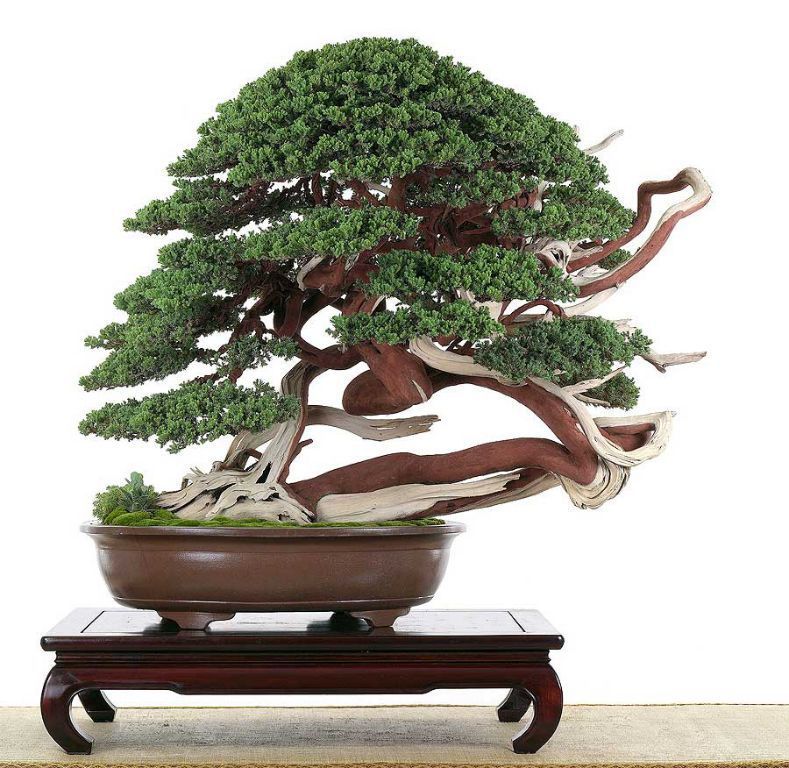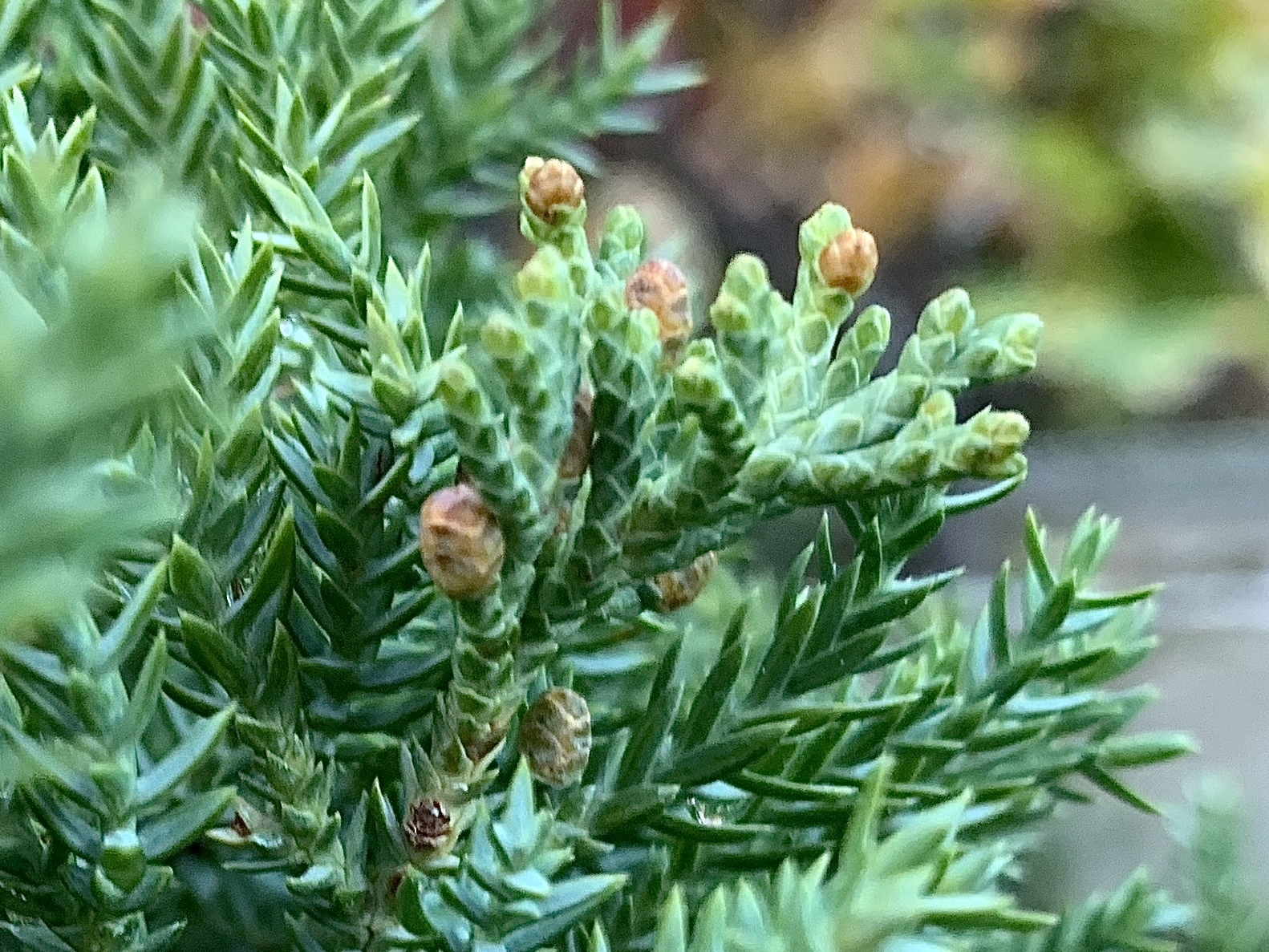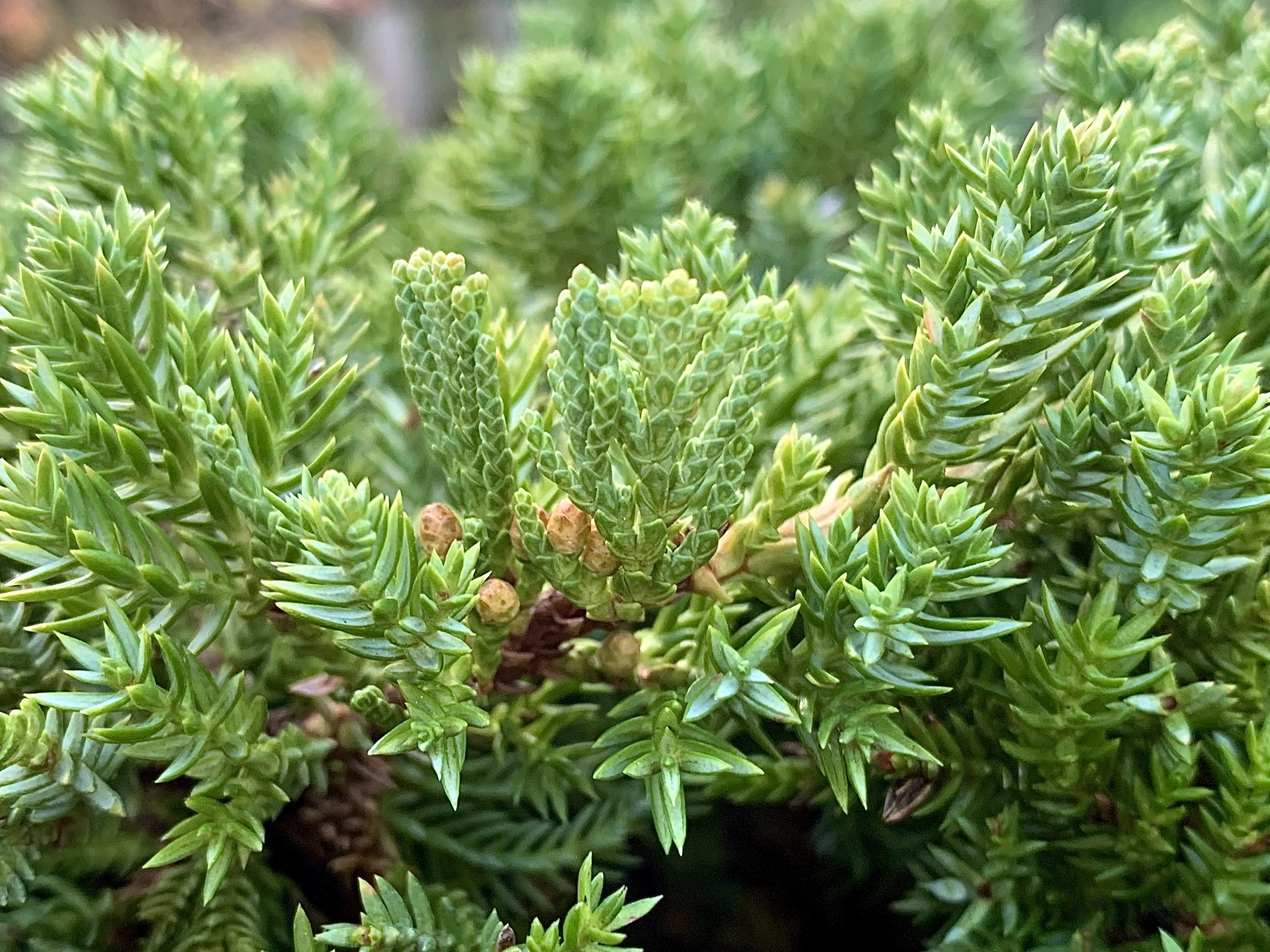
Juniperus procumbens, as described in 1870 by (Siebold ex Endlicher) Friedrich Anton Wilhelm Miquel (1811-1871), in Flora Japonica, 2nd edition, is commonly known as Japanese garden juniper; as well as Šœ°æŸ (pu di bai), sonare, or hai-byakushin in the Japanese language. Its status as a wild plant is disputed; some authorities treat it as endemic on high mountains on KyŠ«shŠ« and a few other islands off southern Japan, while others consider it native to the coasts of southern Japan (north to Chiba Prefecture) and also the southern and western coasts of Korea. It is closely related to Chinese juniper (Juniperus chinensis), and is sometimes treated as a variety of it, i.e.Juniperus chinensis var. procumbens.
Description. Japanese garden juniper s a prostrate plant, which usually grows between 8 to 12 inches (20 - 30 cm) tall, although sometimes as high as 20 inches (50 cm). While it does not get very tall it can get quite wide, 12 to 16 feet (2 - 4 m) across or more, with long prostrate branches.
Distribution. This species is native to Japan - KyŠ«shŠ« and Bonin Islands. Hardy to USDA Zone 4 (cold hardiness limit between -20° to -30° F / -28.9° to -34.4° C
Cultivation and Uses. Several cultivars have been selected for cultivation, the most widely grown being 'Nana', a slow-growing procumbent plant. Others include 'Bonin Isles', a strong-growing mat-forming plant collected on the Bonin Islands, and 'Green Mound', which may just be a renaming of 'Nana'. A variegated plant sold under the name Juniperus procumbens 'Variegata' is actually a misnamed cultivar of Juniperus chinensis.

